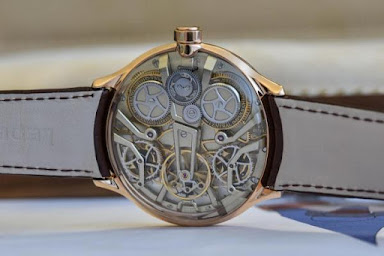The Chronometer of Extremes
Bernhard Lederer, inceptor of numerous breakthroughs in watchmaking and creator of extraordinary tourbillons, returns to center stage with a new collection entitled ‘Tribute to the Masters of Escapements,’ a limited series of precision chronometers designed and developed to honor those who set true milestones in the advancement of an horological invention that remains as crucial and fascinating as ever.
After years of research, the watchmaker, incidentally one of the first members of the AHCI (Académie Horlogère des Créateurs Indépendants, an association with the mission to perpetuate the art of independent watch and clockmaking), brings to fruition the principle of the natural escapement with two 10-second constant-force mechanisms as conceived by John Harrison in 1756.
The
Central Impulse Chronometer by Bernhard Lederer: a sleek watch with a movement
of exceptional complexity, the result of unimagined development efforts and a
testament to the noblest of legacies.
Once again the watchmaking and aesthetic world of Bernhard Lederer finds its expression in a new high-precision chronometer. The first Bernhard Lederer watch of the ‘Tribute to the Masters of Escapements’ collection comes in a case that has a diameter of 44 mm and a thickness of 12.2 mm.
In it the award-winning German watchmaker has placed the fruit of years of reflecting upon and exploring the escapement, one of the most complex and noble subjects in watchmaking. The result is Central Impulse Chronometer whose movement has a natural escapement.
Yet all this sophistication remains elegantly subtle. The Central Impulse Chronometer comes in the form of a watch in a sleek, understated round case in rose gold with a smooth bezel.
The dial is vast, minimalist in its markings,
save for a small seconds at 8 o'clock with a circular finish. For those who
prefer a more visible technicality, Bernhard Lederer offers a second version in
white gold with a slate grey sunburst open worked dial. It offers views of the
final part of the gear train, the remontoires and the escapement, i.e. the
distinctive core of the Central Impulse Chronometer.






Comments
Post a Comment